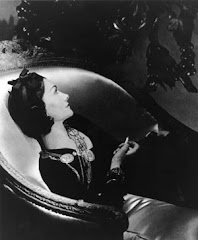This is a piece I did for the Telegraph on the new jewellery gallery which is about to open at the V&A. I'm going to the private view next week - champagne, canapes and staring at tiaras. And where are you now, moths?
Chadour-Sampson takes out what looks like an ordinary plastic bag (though it's conservation-grade plastic) and opens it to reveal an emerald and diamond necklace and earrings: the Beauharnais emeralds, given by Napoleon to his adopted daughter, Stéphanie de Beauharnais, on her marriage in 1806 to the heir to the Grand Duke of Baden, and probably made by Nitot & Fils of Paris. It was about this time that jewellers began to develop open-back settings, which allowed more light through the stones. The simplicity of the setting, the square-cut and pendant emeralds surrounded by diamonds and connected by chains of diamonds and emeralds, must have been an early form of minimalism. Clasping it to my neck, I regret that I am not fit enough to make a run for it down the stone steps.
Cameos (the Victorian equivalent of keeping a picture of your loved one on your mobile phone), lockets containing strands of your nearest and dearest's hair (dead or alive) and jet mourning jewellery were all characteristics of 19th-century decorative jewellery, though it still incorporated religious motifs such as crosses. By the 1860s the trade had been transformed by mechanisation. Jewellery went mass-market with gold-plated base metals and machine-made chains, and was now worn by all classes. Inevitably, the simplicity of great - and easily copied - sets like the Beauharnais emeralds had to give way to jewels as works of art in themselves, such as a spectacular art-nouveau orchid of gold enamel, rubies and diamonds, designed to be worn in the hair, which has the slightly sinister fin-de-siècle decadence of the symbolist painters. At the turn of the last century the tiara became a fashion item, and no longer the preserve of royalty and aristocracy. Cartier was the leader in the making of tiaras, such as the piece made for Alexandra Comnène for her marriage in 1913 to Robert Everts, a diplomat, with cabochon rubies - early examples of synthetic stones, supplied by Comnène herself


5 comments:
And Linda, how did putting on and wearing that 6th Century BC gorget FEEL? I have always imagined that wearing ancient art like that would feel magical.
More fiction material:
Writer, suffering from a gemnological variation of the Stendhal Syndrome, bedazzled by the history, craft and beauty pf the jewellery on show, could not resist (...)
Her ensuing book, "The Thoughtless Dresser"...
This is 95% off message, but I can bring it back to jewellery somehow...have been away for nearly 3 weeks, to blow away my own moths and cobwebs, and my goodness the topics have been varied in my absence. I bought The Clothes Off Their Backs to read on the plane, and Guerlain's bronzer duty free. Both marvellous. I bought black Tahitian pearls. In fact, they're almost a luminous dark green with a turquoise tint. There we are, back to seductive baubles.
Linda, I am so envious of you going to the private view! I'm really looking forward to seeing the new jewellery gallery, the V&A is one of my favourite places to go in London.
I'm always in awe of jewelry made before the industrial age brought us mass manufacturing and the invention of the diamond saw. Georgian jewlery is by far my favorite and I also love 19th Century revival peices by Giulino and Castellani.
For Beladora.com I did a small amount of research for the Antique Jewelry page.
What I found particularly interesting was that in all of the famous portraiture from the 18th to 20th century, pearl jewelry was most often worn. And these were natualr pearls long before Mr. Mikimoto brought us the technique for cultured pearls. So Rosaria, you're in good company with your tahitian pearls.
Linda, enjoy the V&A.
Post a Comment